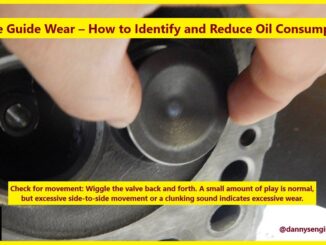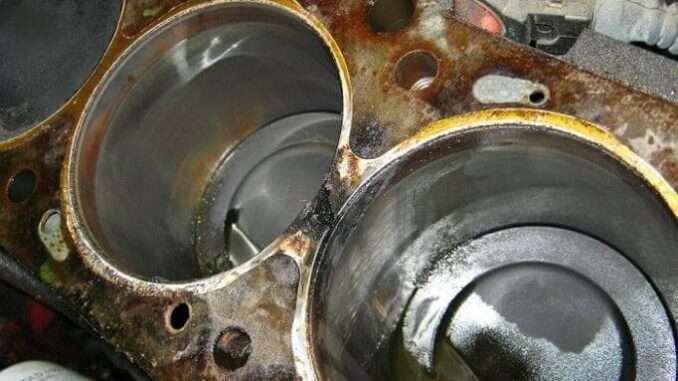
So, having a compression leak between cylinders, can allow the compression, to leak from one cylinder to the next.
This causes a loss of compression, and sometimes, allows exhaust gasses, back into the intake, depending on cam timing.
This sort of head gasket leak, typically results in, rough running, misfires, and a loss of power.
So, the most common cause, of a compression leak between cylinders is, engine overheating.
Because, when the engine gets too hot, the cylinder head expands. And, can crush the head gasket and cause failure. So, what makes a head gasket, different from any other gasket? Because, it also needs, to seal the cylinder, to prevent the engine from losing compression.

In order to form a good seal, the head gasket has steel rings, known as fire rings. Consequently, it provides a seal capable of dealing with, the high temperatures and pressures involved.
So, head gaskets are the most, over stressed gaskets in an engine. Because, they have to deal with sealing, a list of things, at the same time. They simultaneously seal oil, coolant, and engine compression, away from each other and the outside.
So, if the leak is between cylinders, the gasket will leak compression, between the adjacent cylinders. This usually will cause, a engine misfire and a significant loss of power.
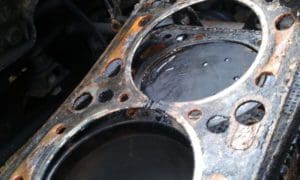
But, when they do blow, they can fail in a number of different ways. And, each failure will result in, different symptoms. The most common symptom in this case, is a engine misfire. And, that would result, from the leakage of compression, between cylinders.
What Are the Signs Of A, Compression Leak Between Cylinders?
A blown head gasket, shares similar symptoms, to other engine faults, including overheating. But, there are a few signs that can tell you, exactly what you’re dealing with.
Below, we list some of the classic things to look for, when diagnosing, a compression leak between cylinders.
Poor engine performance and rough idling engine. Because, the combustion chamber, is no longer properly sealed, this results in the, partial combustion of fuel and air. As a result, leading to a rough engine idle and overall drop in performance.
If two adjacent spark plugs are fouled/ quite a bit darker than the others.
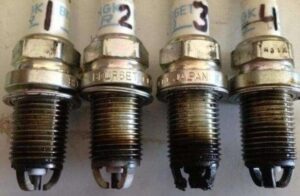
Some symptoms of a blown head gasket, may be very minor at first. So, you may not even notice them and they get ignored. As a result, whenever possible, always get any symptoms checked over, by a professional mechanic. Because, small problems, can become very big and very expensive quickly, in the case of a faulty head gasket.
How Important, Is A Head Gasket?
A head gasket is the gasket that sits between, the cylinder head and the block. Its job is to seal the two mating surfaces of the top and bottom halves of the engine. This means, unlike any other gasket in an engine. The head gasket has to seal, oil, coolant, and compression from the cylinders at the same time. This makes it the most over stressed gasket in an engine, and therefore one of the most likely to fail.
How To Test For A, Compression Leak Between Cylinders
Bubble Test
The Bubble Test, Is Done With, A Cylinder Leak Down Tester
So, to determine the health of a head gasket, between two cylinders, try doing a bubble test. If you believe you have a leak, but just cannot find it, doing a bubble test, may be the answer. There are occasions when, either a compression or leak down test, will not show a very minor leak. For example, when the leak is, between the cylinder sealing surfaces.
When you do a leak down or compression test, there is always some leakage. It may be from rings or valves, so, doing the bubble test, may be the answer. (compression leak between cylinders)
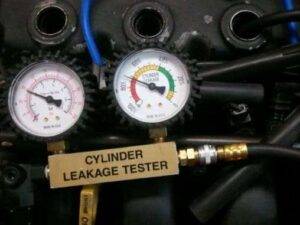

Bubble Test – How To Do It ( Seven Easy Steps )
- The first thing you have to do is, remove all the spark plugs.
- Use a cylinder leak down tester and hook it up to one of the cylinders.
- Apply 100 psi of air pressure, to that cylinder.
- Use another hose from a compression tester and hook it up to, the adjacent cylinder.
- Place that second hose, in a jug of water and look for bubbles in the water.
- Bubbles in the water, confirm sealing issues.
So, you will need to do all the cylinders. Since, there may be an occasion where, a compression leak between cylinders, leaks only in one direction.
Though this condition is rare, it must to be understood that the purpose, is to diagnose a problem. Consequently, no short cuts can be taken.
Also, there is no pressure reading with the bubble test, only a visual confirmation of bubbles in the water.

Also, Helps Find Very Small Leaks, In Hard To Find Places
- Sometimes there is a very small leak in a cylinder wall. ( From cracks or perossidy in cylinder )
- Incorrect cylinder sleeve installation. ( Possibly too much crush, causing a cylinder to distort and leak )
- Blown Gasket or leak between cylinder. ( Gasket, cylinder damage or cylinder head damage )
- Even a (MLS) gasket leaking internally. ( Because of multiple layers of material )
- Damage to a cylinder from hydro-locking. ( Water entering a cylinder from flooding )
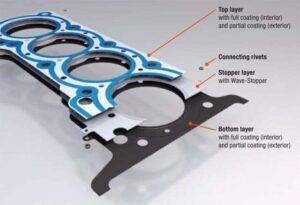
Conclusion
So, prevention is much better than cure, when it comes to, compression leak between cylinders. Head gasket failures are usually the result of, an engine overheating. So, the best way to prevent a problem, is to ensure your cooling system, is in good condition.
Ensure the system has no leaks, and the radiator is working properly. Also, the coolant is at the correct level. Finally, make sure the electric fans are working properly. And, that the thermostat opens, at the temperature it should.
Thank You !



